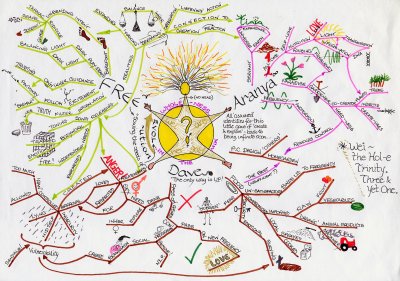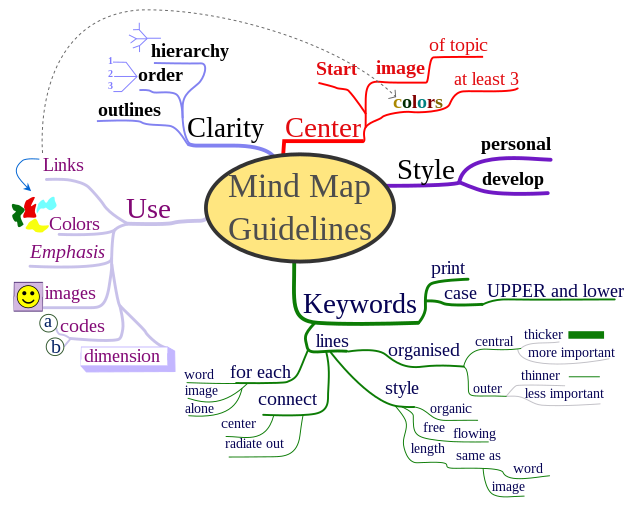It must have been in the early 1980s as best I can remember. I was running my own business, traveling a lot, and visiting my sister who has a PhD in psychology and lived on the opposite coast. Because I was doing corporate training specializing in marketing media we often chatted about her view of what was going on in my world. On one visit she gave me a book by Tony Buzan about mind mapping. I loved it and still use mind mapping as a simple exercise for problem solving because it works for me. Now you can even buy software to help you do mind mapping! Here's a link to the Buzan web site: http://blog.thinkbuzan.com/ It's worth a browse.
You might have heard of mind maps and mind mapping as a way to generate ideas, problem solve, "think outside the box", or look at the big or global picture. We used to call a similar exercise a "mind dump" but it's more than that: mind mapping is a way to organize and see relationships, on paper, that might not be clear otherwise. Here's a link to what Wikipedia has to say about it: http://en.wikipedia.org/wiki/Mind_map
And here's a couple of mind maps, from Wikipedia as well. (Thanks Wikipedia, what would we do without you?)

The process of mind mapping is outlined on Wikipedia and here's an edited version, based on my own experience using the form. I'm in blue, below in response to Tony Buzan's version of mind mapping, and edited by me for emphasis.
- Start in the center with an image of the topic, using at least 3 colors. OK, I love color so I use a new color for each main group or topic, or I'll do the main writing in black and add relationships with a lot of other colors.
- Use images, symbols, codes, and dimensions throughout your mind map. Some people never make it past language thinking and always use words. That's cool, but if you can think visually or like to use symbols, images, even emoticons, go for it.
- Select key words and print using upper or lower case letters. Wow! So restrictive and likely to block your flow! Just go for it: scrawl, scribble, print or use calligraphy. It's more important to get the idea down.
- Each word/image is best alone and sitting on its own line. See it differently again: flow is most important in the encouragement of ideas. You can extract major and minor thoughts and refine it later, if you wish.
- The lines should be connected, starting from the central image. The central lines are thicker, organic and thinner as they radiate out from the centre. Looks real pretty but way too fussy for me. Takes too much time, in my opinion.
- Use multiple colors throughout the mind map, for visual stimulation and also to encode or group. Colors = stimulation! Now we're talkin'!
- Develop your own personal style of mind mapping. Please do. Make it your own... no rules:)
The URL for this post is: http://nutsfromthefamilytree.blogspot.com/2013/01/the-creative-process-mind-maps.html

Great post about mind mapping. I end up using them on a regular basis for just about any project, but I can see how they would be useful in genealogy as well.
ReplyDeleteI love this. I have done it before, but not been entirely diligent about making them use the colors. I think that makes it more fun!
ReplyDeleteMind Mapping Template